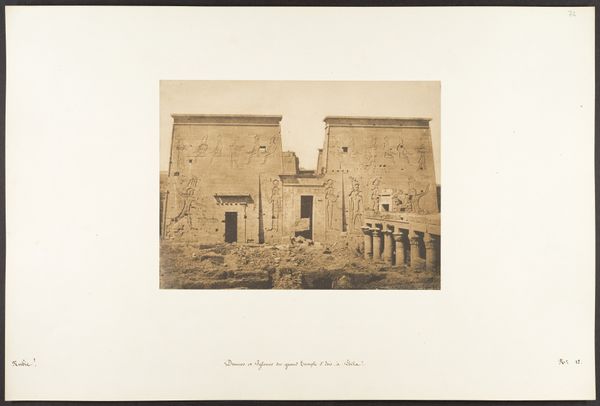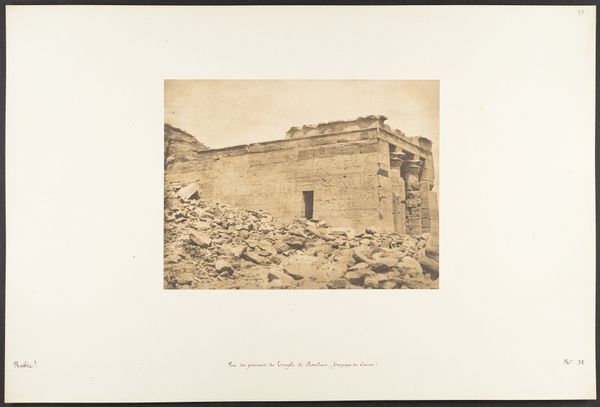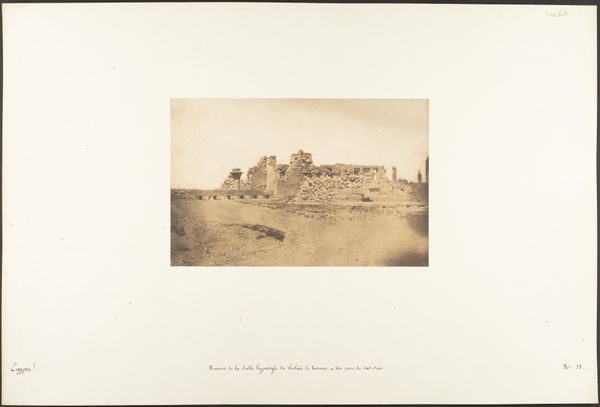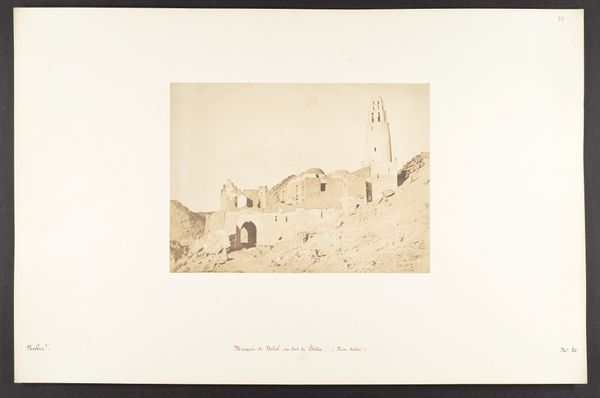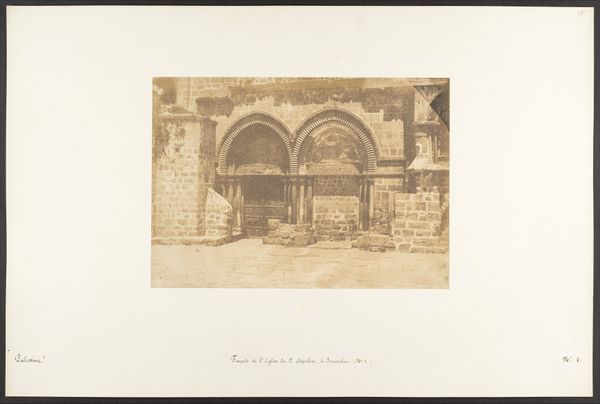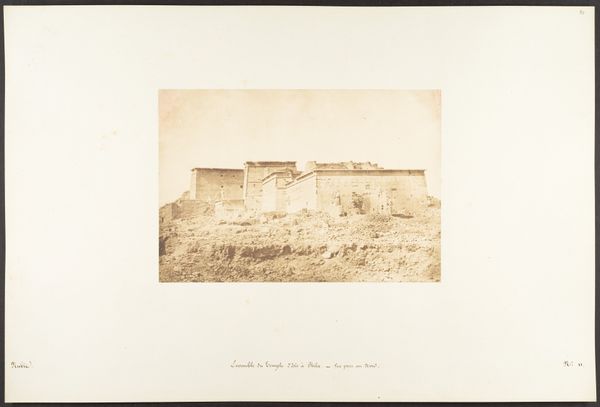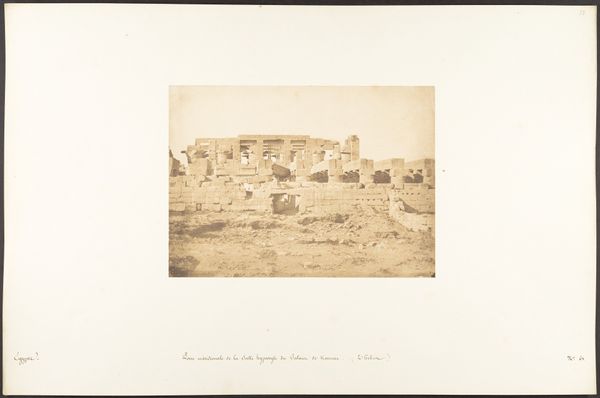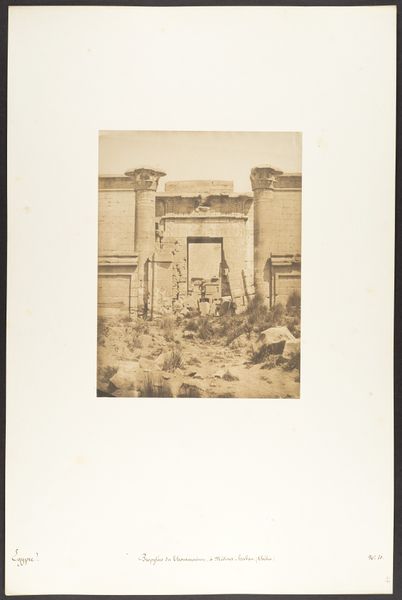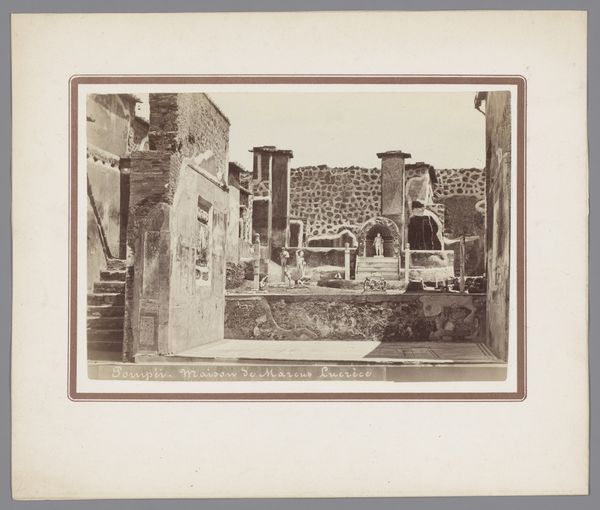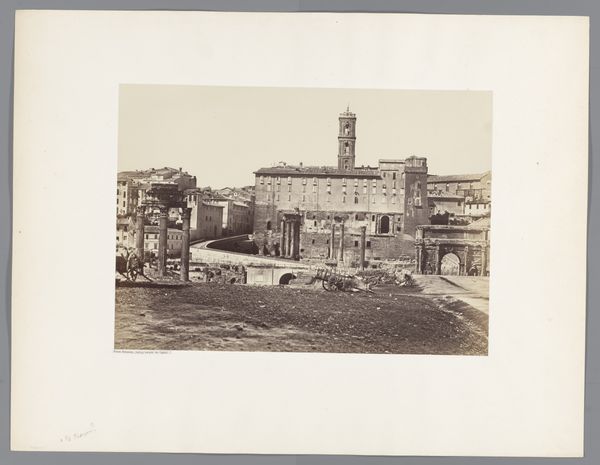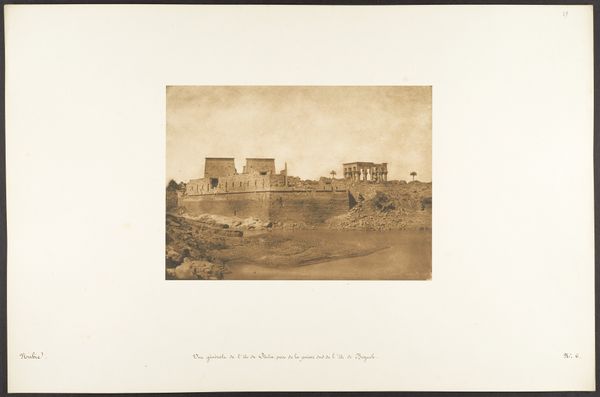
Grand Hypètre ou Typhonium, à Philae - Vue prise de l'Est 1849 - 1850
0:00
0:00
photography, architecture
#
landscape
#
ancient-egyptian-art
#
photography
#
ancient-mediterranean
#
architecture
Dimensions: Image: 6 5/8 × 8 3/4 in. (16.8 × 22.2 cm) Mount: 12 5/16 × 18 11/16 in. (31.2 × 47.5 cm)
Copyright: Public Domain
Maxime Du Camp made this photograph of the Grand Hypètre at Philae in the mid-nineteenth century, using the waxed paper negative process. Considered one of the first travel photographers, Du Camp was commissioned to document monuments in Egypt, Nubia, and Palestine by the French Ministry of Public Instruction. His photographs were intended to serve the scientific interests of a European audience. The images, like this one of a temple in Philae, reflect the cultural and political context of French colonialism. They fed into a fascination with the “Orient” and were used to legitimize European expansion and control. We can think of Du Camp's photograph as part of a larger project of cultural appropriation. By studying related archival materials and considering the social and intellectual history of the time, we can better understand the complex relationship between art, power, and representation.
Comments
No comments
Be the first to comment and join the conversation on the ultimate creative platform.

